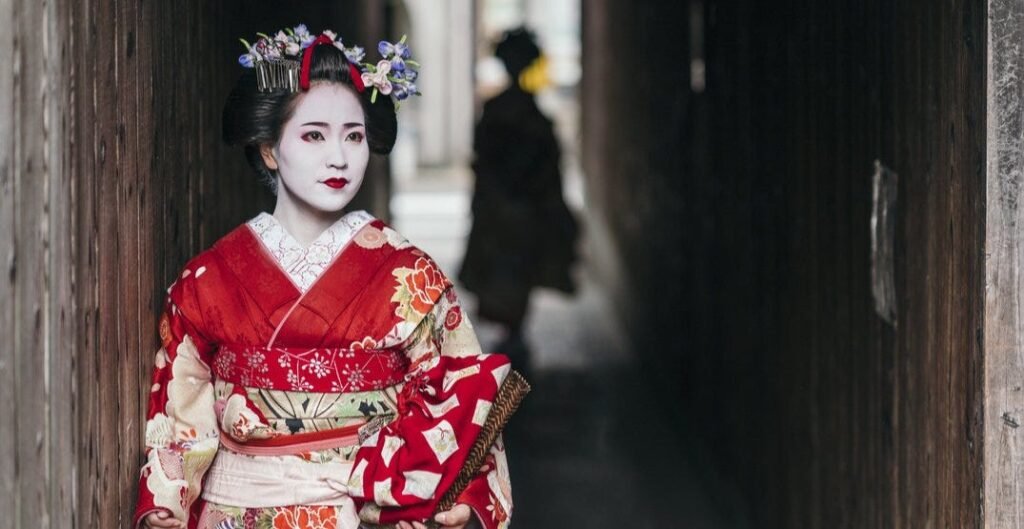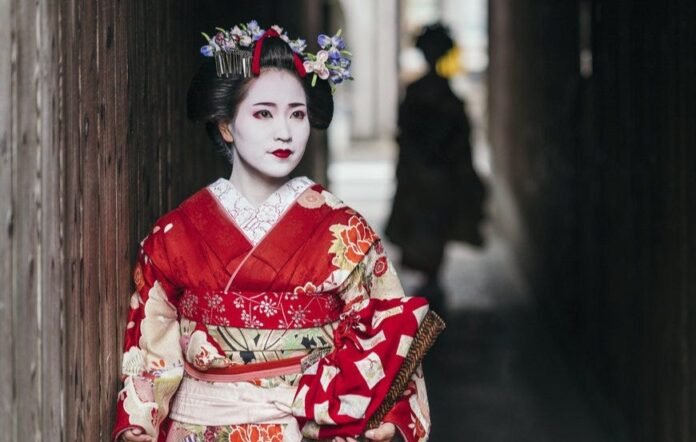Memoirs of a Geisha Book Review: The defining eye candy of a generation lost to racial bias and wild hate crimes against the non-whites also included prototypical representations of the imagined east through the propagation of most popular forms of media such as books, movies, etc., such as one of the movies – Memoirs of a Geisha, written in 1997, and its feature film, released in 2005, were more prominent in the United States than in Japan. Foreign audiences embraced the tale of Sayuri, the fictional Geisha, whereas Japanese audiences were less enthused.
The book author Arthur Golden and film director Rob Marshall employed the use of ‘Binary Opposition’ and ‘Self & the Other’ to better appeal to their capitalist needs which are usually found in an ill-informed audience about a certain subject to make the forged narrative enticing. Golden portrayed Japanese culture and Geisha as something to be fetishised, exoticized, and romanticised (treating the definition nothing better than an object). Their accomplishment not only demonstrates the progress of these so-called devices (gimmicks) for their target demographic, but it also shed light upon a lot about the West’s (especially, America’s) cultural preferences for the Orient.
Also Read: Celebrity Season 1 Review: Fame, but at what cost?
Memoirs of a Geisha By Golden Arthur Summary
Golden’s novel was fiction, but its publication and dispersion sparked a cross cultural fracas and piqued western audiences’ curiosity because the story of the fictional Geisha, Sayuri, was plausible. Aside from the utterly irrational and improbable elements of Memoirs of a Geisha; the film version sparked outrage in Japan because the majority of the leading Japanese characters were played by Chinese actors, and the characters’ make-up, movements, and deportment, as well as the settings and scenes, were filled with inaccuracies.
After interrogating Iwasaki about her existence as a Geisha, Golden abandoned an initial firsthand account of a geisha he had specified in the third person in favour of a fictionalised memoir form, drawing inspiration from but changing in disparaging ways facts from Iwasaki’s true story. He never would have invented the story he ultimately wrote using only his fantasy or second-hand details. Golden acknowledged that Iwasaki was critical to his desire to determine the Geisha story. The fictionalised memoir of Golden and the facts of Iwasaki’s life that influenced it were inextricably linked.
The Orient is objectified by the West as something to be seen, photoed, researched, and imbibed. Westerners emerge in Memoirs of a Geisha through the gaze of ‘Sayuri,’ a narrator created by Golden. Any Western concept is credited to Sayuri. Rather than using his own Western voice as the external observer, Golden let the protagonist, Sayuri, a former geisha, tell her own story. Memoirs of a Geisha contains numerous thorough explicit scenes that satisfy the foreign enthusiasm, as “the urge for this spontaneity of the real became an ambition for straightforward and physical contact with the exotic, peculiar, and seductive.”
The sex scenes are designed to tantalise readers so that they can encounter the bodies of geisha, who are not for usage in actuality. Western readers can envision themselves as the personalities who caress, dig deeper, investigate, and ingest the Orient’s bodies. Readers are encouraged to insert themselves as objects of desire into the text. At the same time, readers can keep their distance because the novel’s characters are fictional, either Japanese or American soldiers/occupiers after WWII.

Sayuri, a poor seafront village girl, transforms into an overtly sexual creature who fantasises about sex and sexually promiscuous men. Sayuri is transformed into a sex symbol inclined to be devoured by Golden. “No man will wish to eat it (Sayuri) if he hears a suggestion that some other man has taken a bite,” says Mameha, Sayuri’s high ranking geisha, during the “Mizu Age” (coming-of-age ceremony) competition. Despite Mameha’s warning, ‘Sayuri’ is duped by Baron, Mameha’s danna (patron), an elderly powerful man.
She is led to his private suite in front of others at a club on his property, where he robs off layer upon layer of her kimono before a mirror. “I’d undoubtedly never seen myself so beautiful,” Sayuri reflects, “I’d never seen myself so stark naked before” (p. 262). Baron’s only sexual attraction was in shallowly exploring Sayuri’s body, fondling but not lacerating her. The detailed sex scenes involving Dr. Crab and Baron are meant to pique the interest of readers who keep their distance from this exotic eroticism.
Also Read: Elemental Review: A Return of Classic Pixar Storytelling
Memoirs of a Geisha Book Review – Memoirs of a Geisha Book vs Movie
Orientalism regards the East as the polar opposite of the West. If the West is developed, spotless, beautiful, and elegant, the Orient must be primitive, dirty, shabby, and basic. Golden and Marshall have sown colonial seeds in their books and films that confirm the Orient as the negation of the West. Memoirs of a Geisha perpetuates harmful perceptions of Japanese people and culture. When the West engineer tes the Orient as its polar opposite, the Eastern culture is misconstrued.
Golden and Marshall portray the Japanese as quiet, tensely polite people who eat exotic foods and slurp noodles. Golden and Marshall also create misunderstanding of geisha as sexually submissive women who bathe with strange men, rest their necks on special pillows to keep their hairstyles, play shamisen (musical instruments) made from virgin kittens, and wear facial powder made from nightingale droppings.
These misunderstandings contribute to the perception of Japanese culture and geisha as exotic, primitive, irrational, filthy, unholy, unfaithful, strange, and mysterious. Because Golden and Marshall’s target audiences were Westerners, the cultural mischaracterization and downright lies in Geisha may have gone unnoticed by most viewers.
Have you read the Memoirs of a Geisha by Arthur Golden or watched the movie version of the Memoirs of a Geisha? If yes, what are your comments? Do let us know your thoughts in the comment section below.
